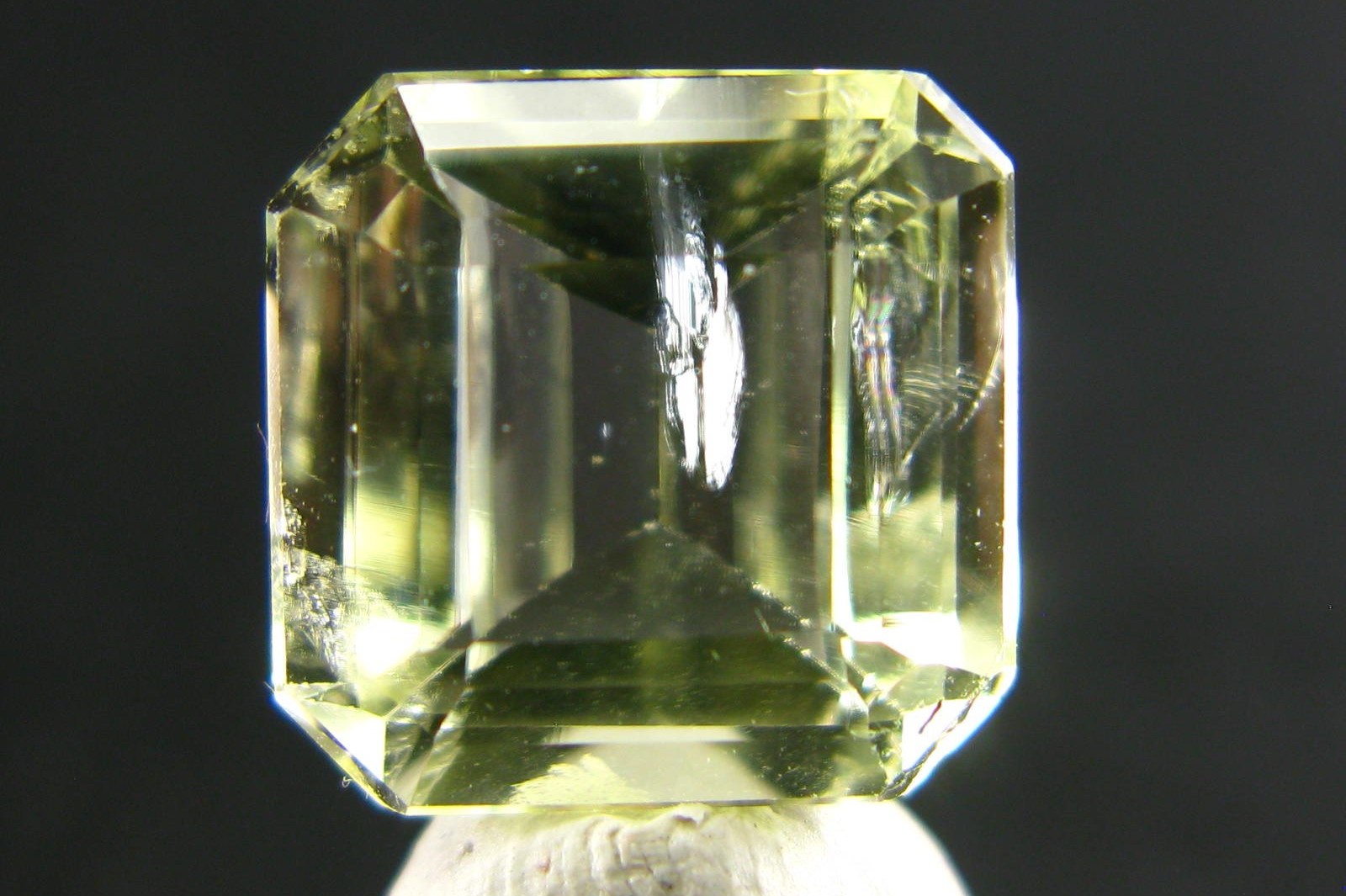
Have you ever heard of amblygonite? This intriguing mineral, first discovered in 1817 by August Breithaupt in Saxony, Germany, might not be a household name, but it holds a treasure trove of unique properties and uses. Named from the Greek words "amblys" (blunt) and "goni" (angle), amblygonite is known for its distinctive cleavage angles. With a chemical formula of LiAl(PO4)F, it contains valuable lithium and phosphorus. Found in granite pegmatites, this mineral comes in various colors, from white and yellow to rare pinks and purples. While not commonly used in jewelry due to its softness, amblygonite's industrial applications and rarity make it a gem worth knowing.
Key Takeaways:
- Amblygonite, discovered in 1817, has unique physical and chemical properties, making it valuable for industrial use and as a sought-after gemstone for collectors.
- Found in various colors and locations worldwide, amblygonite's rarity and historical folklore add to its allure, making it a prized gemstone with a rich history.
Discovery and Naming
Amblygonite has a rich history that dates back to the early 19th century. Its discovery and naming are rooted in its unique physical characteristics.
- Amblygonite was first discovered and named by August Breithaupt in Saxony, east central Germany, in 1817.
- The name "amblygonite" comes from the Greek words "amblys," meaning blunt, and "goni," meaning angle, referring to the four angles of cleavage the mineral possesses.
Chemical Composition and Structure
Understanding the chemical makeup and structure of amblygonite helps in identifying and utilizing this mineral.
- Amblygonite has the chemical formula LiAl(PO4)F, containing about 10% lithium and phosphorus.
- Its structure is characterized by chains of corner-linked AlO4F octahedra that run parallel to the c-axis.
- These octahedral chains are linked laterally by edge-sharing PO4 tetrahedra and larger LiO4F-polyhedra.
Physical Properties
Amblygonite's physical properties make it unique among minerals, influencing its use and identification.
- Amblygonite is typically transparent to translucent, with a vitreous to greasy or pearly luster.
- Its hardness ranges from 5½ to 6 on the Mohs scale, making it relatively soft.
- It has perfect cleavage on the {100} plane and good cleavage on the {110} plane.
- The fracture of amblygonite is irregular or uneven, often breaking into blocky pieces.
- The density of amblygonite ranges from 3.04 to 3.11 g/cm³.
Optical Properties
The optical properties of amblygonite are essential for gemologists and mineralogists.
- Amblygonite is biaxial with refractive indices ranging from α= 1.577 to 1.591, β= 1.592 to 1.605, and γ= 1.596 to 1.613.
- The birefringence is 0.020, and the 2V angle is measured between 107° and 129.5°.
- Amblygonite exhibits non-pleochroic properties, meaning its color does not change when viewed from different angles.
Colors and Occurrence
The variety of colors and locations where amblygonite is found add to its allure.
- Amblygonite is found in colors like white, yellow, beige, salmon-pink, pale green, light blue, and colorless.
- It is primarily found in granite pegmatites, which are rich in lithium and phosphates.
- Amblygonite is often associated with other minerals such as spodumene, apatite, lepidolite, tourmaline, and albite.
Locations of Occurrence
Amblygonite is found in various parts of the world, each location contributing to its unique characteristics.
- Notable locations include Saxony, Germany; Minas Gerais, Brazil; Sakangi, Mogok, Mandalay in central Burma (Myanmar); Montebras, Limousin in central France; Bernic Lake, Manitoba in central Canada; Maricopa County, Arizona; Taos country, New Mexico; Riverside County, California; and the black hills of South Dakota.
Industrial and Gemstone Uses
Amblygonite's uses extend beyond its beauty, playing a role in various industries.
- It is used in the production of porcelain enamels and glass dinnerware, increasing the opacity of glass.
- High-quality amblygonite is extremely rare due to its softness and brittleness, primarily cut for collectors rather than for jewelry.
Identification and Testing
Identifying amblygonite can be tricky due to its similarities with other minerals.
- Amblygonite can be confused with minerals like brazilianite, scapolite, albite, and quartz.
- A gas flame test can help identify it by determining the presence of lithium, which yields a bright red flame when powdered amblygonite is lit.
High-Pressure Behavior and Solid Solution Series
Recent studies have shed light on how amblygonite behaves under different conditions.
- High-pressure behaviors reveal structural changes under elevated pressures up to 34.3 GPa.
- Amblygonite forms a solid-solution series with montebrasite (LiAl(PO4)OH), characterized by the substitution of fluorine for hydroxyl groups.
Geological Context and Associations
Amblygonite's geological context and associations with other minerals provide insights into its formation.
- It occurs in pneumatolytic environments, forming as part of lithium- and phosphate-rich pegmatites.
- Its occurrence is often associated with minerals like cassiterite and childrenite.
Impurities and Inclusions
Amblygonite is not free from impurities, which can affect its appearance and properties.
- Under the microscope, small inclusions like muscovite can be observed.
- The fluorine content is determined by distillation methods, while other elements like magnesium, silicon, tin, and titanium are determined spectrochemically.
Historical Folklore and Care
Amblygonite has a place in historical folklore and requires special care due to its properties.
- Known as the "Prophet Stone," it was historically used as a visionary stone in folklore.
- Due to its brittleness, amblygonite requires gentle handling and should be avoided in high-temperature environments.
Rarity and Cost
The rarity of high-quality amblygonite contributes to its value.
- The scarcity of high-quality amblygonite makes it a sought-after gemstone among collectors.
- It is listed in gemstone guides for its unique pastel colors, including pale yellow, greenish yellow, various shades of green, blue, pink, and light purple.
Countries of Origin
Amblygonite is found in numerous countries, each contributing to its global presence.
- Countries of origin include Myanmar, Afghanistan, Russian Federation, Angola, Czechia, United States of America, Egypt, Madagascar, Kazakhstan, United Kingdom of Great Britain and Northern Ireland, Portugal, Sweden, Mozambique, Korea (the Republic of), China, Brazil, France, Nigeria, Argentina, Japan, Rwanda, Ukraine, India, Spain, Canada, Norway, Namibia, Congo (the Democratic Republic of the), Finland, Italy, South Africa, Uganda, Zimbabwe, Australia, Ethiopia, Germany.
Classification and Optical Properties
Amblygonite's classification and optical properties are crucial for its identification.
- It belongs to the class of phosphates and is classified based on its chemical composition and crystal structure.
- A detailed optical properties chart includes its refractive indices, birefringence, and 2V angle.
- The refractive index of amblygonite lowers with increased fluorine substitution, influencing its optical behavior.
Final Thoughts on Amblygonite
Amblygonite, with its unique properties and rich history, stands out as a fascinating mineral. Discovered in 1817 by August Breithaupt, this lithium-rich phosphate has a distinctive crystal structure and a variety of colors, from straw yellow to pale green. Found in granite pegmatites, it often occurs alongside minerals like spodumene and tourmaline. Though relatively soft and brittle, making it rare in high-quality gemstone form, amblygonite's industrial uses in porcelain enamels and glass dinnerware add to its significance. Its perfect cleavage, irregular fracture, and non-pleochroic nature make it an interesting subject for mineralogists and collectors alike. High-quality specimens are rare and sought after, contributing to their high cost. Understanding amblygonite's properties, occurrences, and uses provides a comprehensive view of this intriguing mineral, making it a valuable addition to any mineral collection.
Frequently Asked Questions
Was this page helpful?
Our commitment to delivering trustworthy and engaging content is at the heart of what we do. Each fact on our site is contributed by real users like you, bringing a wealth of diverse insights and information. To ensure the highest standards of accuracy and reliability, our dedicated editors meticulously review each submission. This process guarantees that the facts we share are not only fascinating but also credible. Trust in our commitment to quality and authenticity as you explore and learn with us.


